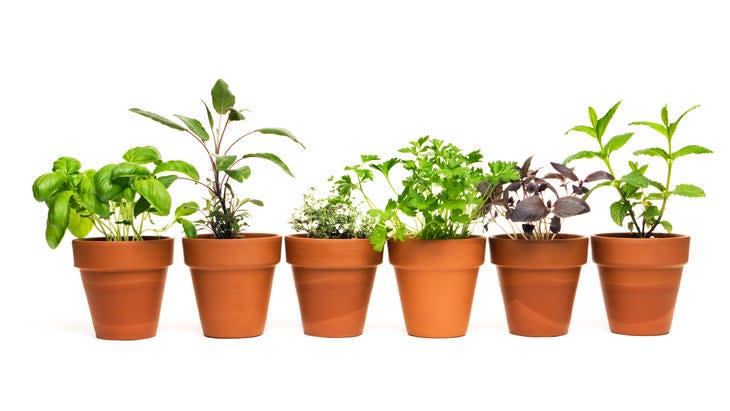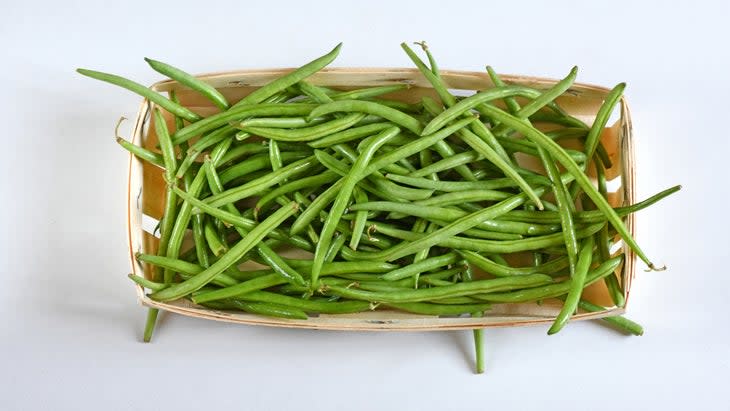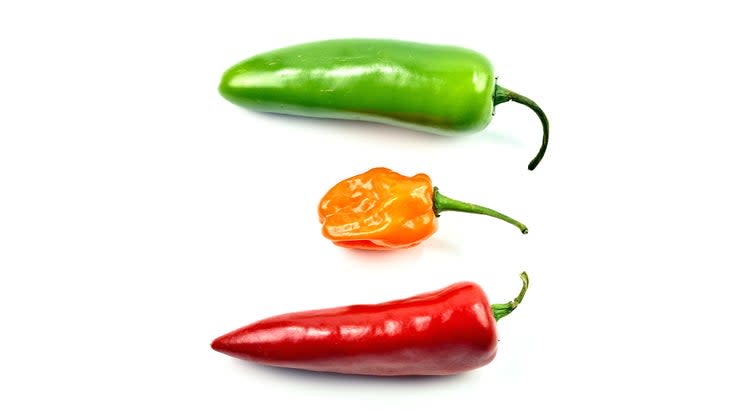How to Grow an Easy Kitchen Garden
This article originally appeared on Outside
Growing your own food is a delicious experience. There is nothing quite like slicing into that first summer tomato, still warm from the sun, or cutting some fresh herbs to add to a dish. A kitchen garden makes for great meals, a sense of joy, and a modicum of food security. Don't overthink it: now that spring is here, find the sunniest spot where you live-maybe in the yard, a raised bed, a big pot on the patio, or a sunny kitchen window--and plant some seeds or seedlings from your local nursery in good, organic soil. With at least five hours of sun per day, the right plants, and a few tips, it's about that simple.
The two of us run a small urban farm in Los Angeles and a company called Edible Gardens LA that has designed, built, and maintained vegetable gardens for countless families over the past 16 years. Here are the five best things for beginners to grow.
Herbs

Herbs are a perfect starting point, because you can grow them year-round: outdoors in warm climates and on an indoor windowsill in regions where winters are cold.
First, buy some organic seeds. Some of our favorite online sites that sell seeds are Adaptive Seeds, High Mowing, and Seed Savers. You can also purchase seedlings at your local garden nursery for a faster and easier start. Get the basic ones that you use regularly in your kitchen: rosemary, sage, parsley, thyme, oregano, chives, and basil. All are easy to grow.
Find a terra-cotta pot at least six inches deep or, if space allows, 18 inches deep so you can grow multiple plants in one pot. (Tip: mint needs its own pot, as it's super invasive.) Never grow food in plastic or fiberglass or treated wood, because the toxins from those materials will leech into the soil and into your food.
Fill the pot with organic potting soil, and sow the seeds following the instructions on the packet. If your plants are indoors, put a plastic tray under them to catch any water that runs through. If you're growing outdoors in the ground or in a raised wooden bed, water deeply three to four times per week, depending on the weather. (Check out our book, A Garden Can Be Anywhere, for blueprints and instructions on building raised beds.) On the hottest days of summer, your garden will need it daily. If you are growing in pots, water deeply every day. Be sure to feed your plants by using seaweed extract every couple of weeks to replenish the nutrients in the soil. Chives can be harvested by cutting straight across, at the base of the plant, but for all other herbs, cut just what you need, taking a few leaves or a few stems, and they will keep growing and you can enjoy them all season.
Tomatoes

Yes, we all love that big heirloom tomato, but do yourself a favor and grow cherry tomatoes instead. The Sun Gold or Sweet 100 varieties mature faster, and you'll be eating delicious tomatoes all summer instead of waiting until late August or September. Buy these seeds and start them indoors now. Yes, now! You can use seed-starter trays or a good ol' cut-off cardboard milk carton full of fresh soil. Give each seed a couple inches of space. After about six weeks, they're ready to transplant. (Important: Tomatoes and the other vegetables mentioned here, except the herbs, cannot continue to grow indoors. Eventually, they will fizzle; they need that summer sun.)
To figure out when to transplant your tomatoes, consult a planting calendar online to determine what growing zone you're in: this sounds complicated, but it's not. At the right time, move them to a big pot (at least 18 inches deep) or raised bed or the ground. If you're using a pot or raised bed, be careful not to put too much weight on a balcony or roof. If you're planting in the ground, turn the soil and mix in plenty of compost.
Even a big pot dries out fast, so you'll need to water daily; in a raised bed or the ground, however, you can water every few days. Don't forget a little seaweed extract for nutrition every couple months. You'll be eating cherry tomatoes in three months; others take longer. But they're all worth it!
Beans

Beans come as snap varieties (such as the classic green bean) and shelling beans (think black beans) and are either bush or climbing varieties--climbers require a trellis or fence or porch post to climb; bush beans do not. Good ones to try include haricot vert, Blue Lake, Hidatsa red, or dragon tongue.
Whether in a pot, raised bed, or the ground, plant these directly in the soil; no seed starting is necessary. Water and feed them as we described with the tomatoes.
Bush beans come into harvest faster, after about three months, and once they begin producing, be sure to pick them three or more times per week: the more you harvest, the more the plant will produce.
Cucumbers

These are so easy to grow that they're going to crowd your fridge. Some of our favorite varieties that offer sweet flavor for slicing and eating fresh are Armenian, Suyo long, salt and pepper, and telegraph.
Like beans, follow the seed-packet instructions and put them directly in the soil, no seed starting necessary, whether in a big pot or raised bed. To save space, give them a trellis of some kind to climb, otherwise the vines wander all over the place.
Water and feed your cucumbers the same way you do with tomatoes and the other veggies listed here. In about 70 days you'll be chopping these for salads or juicing them to enjoy over ice or in a summer cocktail.
Peppers

Growing your own hot peppers will change your cooking. They produce from early summer until the weather cools, and we use them in everything from guacamole to curries to pickling. You can start peppers from seed, but our favorites are easier to grow if you buy them as seedlings at your local nursery. We especially like jalapeno, serrano, habanero and Thai hot peppers. For less spice, try mild habanadas, shishitos, and baby bell peppers, which are much easier to grow than the standard-size bell varieties.
If you live in a place with real seasons, start your peppers indoors just like you would with tomatoes, then transplant them after six to eight weeks into your big pot, bed, or in-ground garden. They need water and food just like the other vegetables mentioned here.
Get Cooking
Now that you know how to grow, let's talk cooking. Suzanne Goin, the James Beard Award-winning chef whose restaurants A.O.C., Caldo Verde, and Cara Cara are standouts in the Los Angeles dining scene, says her favorite ingredients to grab straight out of the kitchen garden include tomatoes, fava beans, peas, and herbs, especially rosemary, basil, cilantro, parsley, and sage. She also likes cutting fresh greens, such arugula, lettuce, Swiss chard, and kale. These plants require a little more space in the garden but can keep on producing all summer.
"Those greens and other garden harvests go into everything," she says. "I love arugula salad with eggs for breakfast. Or Swiss chard and mustard greens sauteed with garlic and olive oil with grilled fish and lemon, or in pasta with bread crumbs. The best is to make a big salad for dinner, sometimes a giant Nicoise-style salad with Spanish tuna in olive oil."
Goin adds that having these ingredients right in your backyard adds a level of freshness and brightness that's just hard to duplicate. "It's also inspiring," she adds. "The garden will lead you to decide what to cook and eat. I think fresh herbs in particular just give your cooking another layer."
The bottom line is: it's not hard to grow some great tastes. The time to start seeds indoors is now. Get out there and get growing.
For exclusive access to all of our fitness, gear, adventure, and travel stories, plus discounts on trips, events, and gear, sign up for Outside+ today.

